No stone left unturned — literally — in Province House restoration
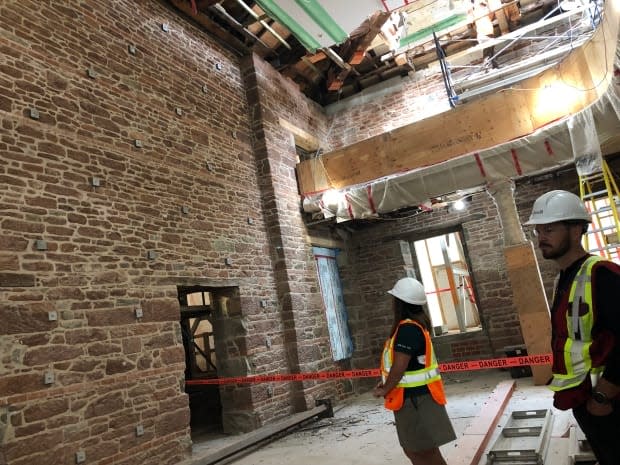
The rough hands of masons and carpenters have now touched, examined, and reset or replaced virtually every stone in Province House.
That painstaking process has provided experts with an intimate knowledge of the building's integrity, as restoration of the historic seat of the Prince Edward Island Legislature nears a critical phase.
"This stonework means the building is back to being structurally sound," said Brian Willis, the project site co-ordinator. "Any of the stones that came loose were taken out, numbered and they were replaced in exactly the same space."
As he spoke with CBC this week, Willis was standing in the Confederation Chamber of Province House, located in the building's west wing, running his hand over an exposed wall of red Island sandstone. At the far end of the building, in what normally houses P.E.I.'s legislative chamber, workers are nearing the end of restoring the block walls there.
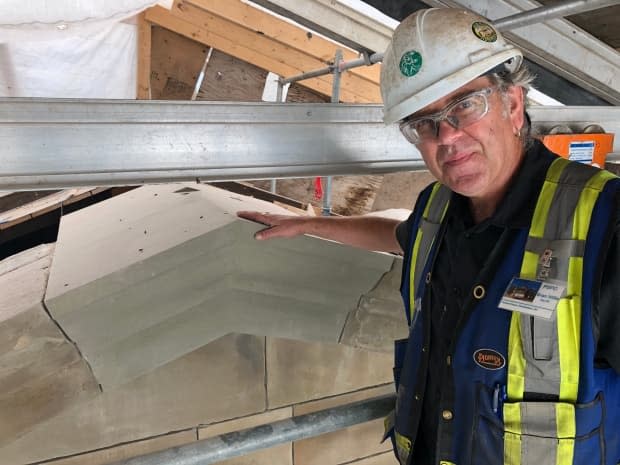
Province House has been under wraps, literally, for years. It closed in January of 2015, when renovations began, and workers erected scaffolding around its exterior and cloaked the entire structure in white plastic sheeting.
Willis climbed to the top of the scaffold, about 14 metres off the ground, to review progress on the building's exterior. Standing at roof level, he pointed out the new apex stone installed at the tippy-top of the building's south-facing roof line.
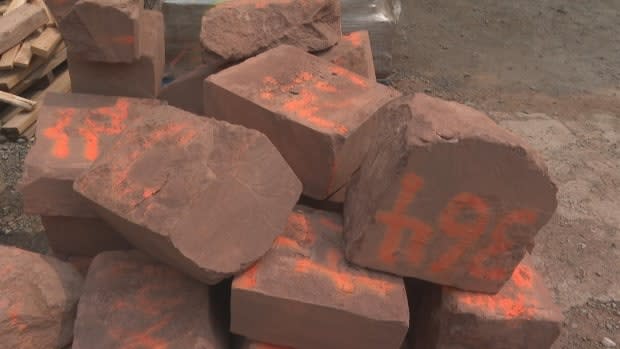
"This stone is kind of the key to the whole assembly," said Willis. "This is a new carved stone that replaced the original."
Workers also replaced the top piece — known to architects as the capital — on one of the four columns that stand at the building's south entrance. Willis estimates about 400 hours of labour went into carving the replica.

In all, one in every four stones on the building's exterior — 1,500 in total — will be replaced with replicas. Those replicas are from the same source as the originals: quarries on Nova Scotia's North Shore.
"I get a kick out of saying, 'These are new stones,'" said Willis. "They're exactly the same age as the others. They've just been out of the ground for a bit less time."
Dirt floor to be excavated
In the cellar of Province House, crews were ducking under the arched brick ceilings as they got ready to excavate the dirt floor.
The basement will see the most extensive changes, with ceiling heights increased and accessible washrooms installed. One room, the former housekeeper's quarters, will be left intact for historical comparison. And a tunnel that currently runs west to connect Province House to the Confederation Centre of the Arts will be sealed.
"It's not part of the building and there [are] structural issues so it's being sealed," said Willis.
A tunnel to the east, heading to the Coles Building, will remain.

Parks Canada work is also underway on new interpretive displays for public viewing when the building reopens. They will be trilingual — in English, French and Mi'kmaw — and Parks Canada is consulting local Indigenous groups on P.E.I. as planning moves along.
The finish line for this $91.8-million restoration project has moved several times since work began.
That's partly due to COVID-19 and partly due to discoveries crews have made along the way about problems with the elegant old building that opened in 1847. Those problems all needed solutions.
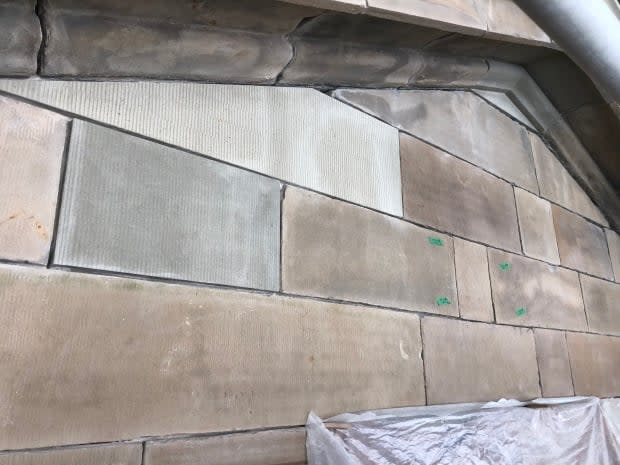
The best estimate for a completion date, at this point, is 2023. That just so happens to be the 150th anniversary of P.E.I.'s entry into Confederation in 1873.
"It's definitely a coincidence," said Nicolle Gallant, project manager with Parks Canada. "But a nice one."
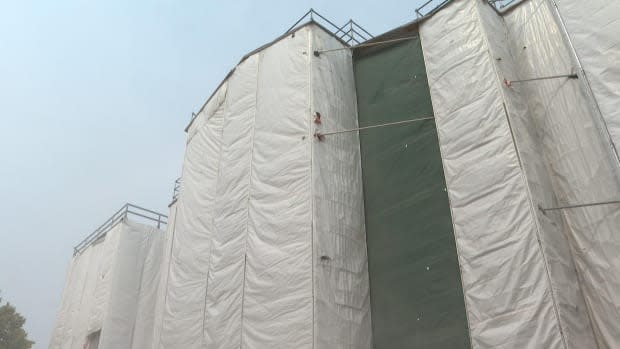
Now that the stonework has been shored up, installation of new electrical and mechanical systems can begin. Then, the interiors will begin to look as they once did, as plasterers and woodworkers restore and recreate the ceilings, walls, floors and trim.
When the white plastic shroud is finally removed outside, keen-eyed observers may be able to see which stones have been replaced. Their colour is slightly different, but that's not a new look, according to officials on site.
"If you review original photos of the building, you can see where there was colour variability," said Tim Chandler, senior project manager. "Over time, they'll become more alike."
More from CBC P.E.I.

